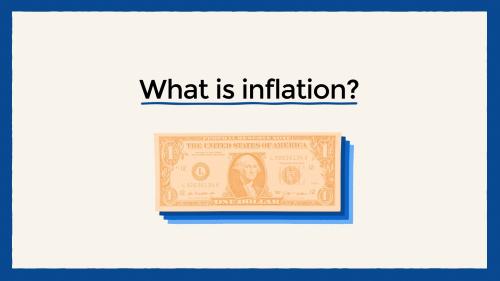A VAT has a lot to recommend it. It is a relatively efficient way of raising revenue, producing far fewer distortions than the current income tax. Moreover, by encouraging saving and productivity, it is exactly what the nation needs to raise future standards of living. A 10 percent broad-based VAT could produce in the neighborhood of $500 billion a year by 2012 according to the Brookings-Urban Tax Policy Center.
In my view, the way to make this politically palatable while advancing other policy goals is to use some of the revenues to provide a refundable credit to lower-income households, thereby offseting the regressive features of the tax, some to lowering the corporate tax rate to make the U.S. more competitive with other countries, and some to eliminating income taxes for many in the middle class, thereby greatly simplifying their lives and making April 15 just another day on the calendar. More affluent Americans would continue to pay income taxes.
Most importantly, the rate of the tax should be linked as closely as possible to the growth of health expenditures over time. Even if the new tax did not reduce the deficit very much or at all in the short-run – something that would be desirable as long as the economy is depressed – it would begin to bite over time, and provide financial markets with a reason to have some confidence that we have gotten our fiscal house in order. The key here would be to make the linkage as automatic as possible so that any further increases in health care spending (as a proportion of the economy) would be fully paid for. To be sure, Congress could delink the two at any time if it so chose, but if the VAT rate was triggered, with some lag, by recent increases in health care spending, as determined by an independent body such as the new Medicare commission, this just might work. If the public rebelled against the higher rates, this would create pressures to rein in health care costs which in the absence of such constraints are likely to rise very rapidly over the next few decades. Coupled with continued innovations in the delivery and financing of health care this could help to bring the rate of growth of health spending within more reasonable bounds. If it didn’t, then at least we’d be paying for the health care we’re collectively consuming.
The big advantage of this plan is that it devotes virtually all of the new revenue initially to lowering other taxes, not to increased spending. But at the same time, it deals with unsustainable budgets by linking the rate of the tax to health care spending, the major driver of unsustainable deficits. The law could even specify that none of the revenues from the VAT could be used to fund new spending programs and that all of the initial revenues would have be used to reduce existing taxes, especially if this is what it would take to get bipartisan agreement on such a plan.
If we could substantially broaden the base of the current income tax, I’d be all in favor of doing so. But the political challenges of doing so should not be underestimated. With this in mind, a clean start with a broad-based consumption tax linked to health care spending, and partially offsetting existing corporate and personal income taxes with some relief for lower-income families, makes a lot of sense.



Commentary
Op-edVAT or Not?
April 26, 2010